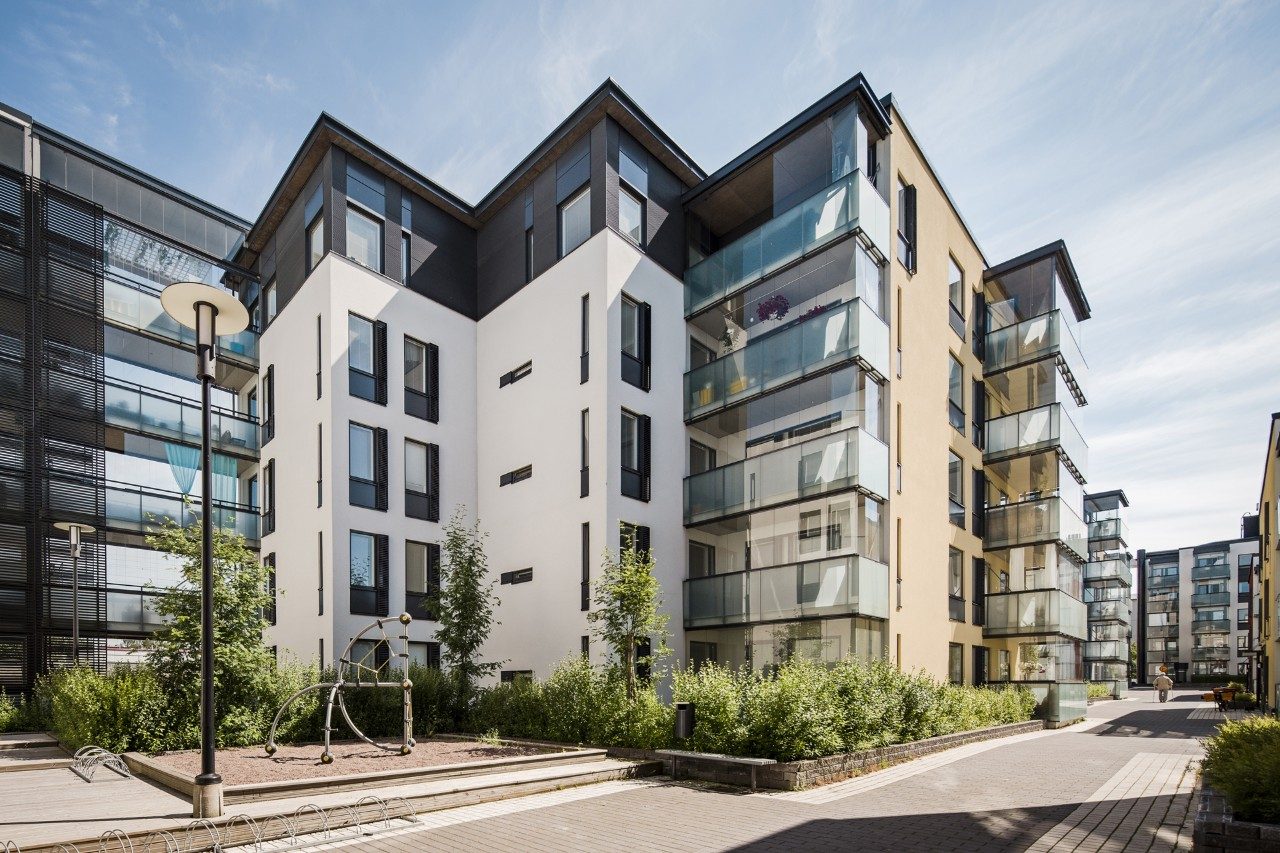Head of Global Property Securities Stephen Hayes: Global city populations continue to grow, driven by urbanisation. The provision of housing for growing populations is a major challenge for many countries and cities. Adequate housing is a factor that influences a city’s mobility of labour, social wellbeing and commerce levels. Government housing policies are typically viewed holistically with policies covering social, private and rental housing. New supply is not always efficient and can be problematic particularly in densely populated cities.
Housing demand has typically outstripped supply over the past decade with strong housing price inflation in many countries affecting the affordability in many cities. There are marked changes occurring within the global housing markets with a defined long-term trend from home ownership to rental accommodation.
The maturity of the Residential for Rent (RfR) markets around the world varies greatly from the more established markets, such as the United States, Germany, France, Finland and the Netherlands, to the more immature markets, such as Canada, United Kingdom and Australia. Demographic trends and the evolution of cities are playing an important role in the growth of RfR around the world. With many years of asset price inflation affecting housing markets, housing affordability has become an issue for many younger generations and the aspiration to own a home has waned as priorities have shifted to lifestyle and experiences. This trend is evident in the US where home ownership peaked at 69.2% in 2004 and has fallen to 64.1% in Q2 20191.
"Technology is also advancing rapidly in today’s society, affecting how we live, work and play. This is particularly the case for younger generations who have more readily adopted new technologies. As a result, younger generation’s behaviours and values are now vastly different to those of previous generations. Using Australia as an example, the prime renting cohort are the Millennials (born 1981-1996) who now represent 44% of the Australian work force."
Source: AlphaBeta – How millennials manage money.
Another factor driving the greater propensity to rent is the quality of the amenities. This is particularly evident as the RfR markets mature. The evolution from Government- owned social housing and the renting of individual apartments from “mum and dad” investors to established, purpose-built rental apartments with high amenity and services is well in train. The old adage, “build it and they will come”, is particularly relevant as RfR markets mature.

Beatrice apartments, Manhattan New York Source: Equity Residential
Modern, purpose-built residential rental buildings contain greater renter amenity than typical standard residential buildings. They have gyms, are pet friendly, have well- amenitized community facilities, parcel delivery, with all services provided by on-site staff. However, the standout differences to traditional residential offerings are the services offered through technological innovation. Modern RfR buildings under institutional ownership are typically highly connected, with services offered through the building’s app. The resident’s phone can run everything from accessing the building and the rental apartment, signing the lease, paying rent, requesting maintenance, booking a car pool and interacting with other tenants using social media services. The buildings tend to be located in close proximity to transport nodes and this feature combining with the car-pooling services, could significantly reduce car ownership, offering extra cost benefits. Other services likely to be included are laundry and cleaning services, child care, removalists and electric bike hire.
Outside of the broader issues such as a shortage of housing in many countries, younger generations are adopting changing lifestyles and preferences when compared to previous generations, which is driving increasing demand for rental properties beyond what has been experienced in the past. This defined social trend is distinct and is resulting in a changing housing landscape within the major cities. The percentage of rental properties when compared to owned residential property has been increasing and is expected to accelerate into the future.
"Millennials have a number of traits that can be broadly categorised. They are averse to debt, with just 41% owning a credit card."
Source: AlphaBeta – How millennials manage money.
They are also 36% more likely to save regularly compared to their parents2. Their life preferences have changed, adopting a “You Only Live Once” (YOLO) attitude to living, which has also influenced spending habits with a focus on experiences over goods.

They are also savvy spenders who are delaying home ownership. Australian home ownership rates have fallen to 66% in 2018 from 71% in the 1960’s3. Housing affordability is another major factor, with housing costing approximately 8 times household income compared to 5 times for baby boomers in 19704. The next cohort behind Millennial’s are Gen Z (born 1996 -2014) who have an even greater adoption of technology and social media and are even more financially savvy and debt averse, having grown up through the Global Financial Crisis (GFC). They are less brand conscious and more price sensitive2.
These social trends and changing behaviours occurring in younger generations are a major contributing factor to the material changes that we expect to occur in the housing market in Australia. We expect purpose-built RfR buildings to grow rapidly in Australia as experienced in other countries around the world.
The total RfR product offering is a game changer for the renting cohort in Australia. No longer will renters have to deal with real estate agents or individual “Mum and Dad” investors. Moreover, with extra amenities and services at the touch of button, the rental experience in Australia is going to be transformed.
The Australian residential rental market is vast with 2.3m households representing 32% of all households3. Representing approximately one in four Australians. The Australian rental market is also highly fragmented and non-institutionalised which is in contrast to other countries such as the United States. Individual investors own the majority of rental properties in Australia. Twenty percent of Australians own an investment property and of those 71% own a single investment property3. Even with the fragmented ownership, the rental market has remained remarkably stable, with national vacancy rates ranging between 2%-4% over the past 30 years. The current national vacancy rate sits at a low 2.5%4.
Australia is likely to follow global demographic trends, with the average household size expected to shrink below the current 2.7 person per household, while average dwelling sizes are expected to fall below the current 3.2 beds per household5. We believe the home ownership rate will continue to fall, creating excess demand for more rental accommodation. The take up of RfR in Australia is likely to be rapid as the purpose-built rental buildings are developed and come on line.
With very low capitalisation rates across most property types, Residential for Rent (RfR) is becoming an increasingly attractive investment. From a comparative total return perspective and on a risk-adjusted basis, the investment case is now compelling. RfR cash flows have proved very stable through economic cycles, with occupancy levels typically remaining high through periods of economic slowdowns6. Rents are typically correlated to employment and wages growth, demographic trends and supply levels. For example, US apartment revenues fell for 5 quarters during the GFC in 2009 and 2010. However, revenues only retraced back to the elevated 2007 levels (Source – Internal Research).
They are financially savvy and have adopted a more conservative approach to living within their means, with 69% adopting better budgeting products such as Afterpay.
Source: AlphaBeta – How millennials manage money.
Using Equity Residential (a very large US RfR REIT) as an example, in this period, occupancy levels fell to 90% with market rents falling approximately 5.0%7. To put this in perspective, the US unemployment rate peaked at 10.1% in October, 20098. During economic slowdowns, new development slows and with the lower job security, renters are typically hesitant to purchase a residence and will likely continue renting. US apartment revenues have subsequently grown on average by +4.0% p.a since 2010, with an average increase of 660,000 new renter households per annum during this time9.
There are some risks, particularly with regard to regulatory risk. Given the social nature of housing, regulators and Governments can act irrationally. While rare, Governments responding to popular public opinion can overregulate rental markets through policies such as rent controls. A recent example of this is Berlin, where the city has proposed a 5-year rental freeze on all apartments. While Berlin is unique, with 80% of the city’s residents renting10 as opposed to owning a home, it is still an extreme measure that will stifle new supply and future private capital expenditure. This may result in a shortage of housing, poor quality rental stock, lower jobs growth, higher carbon emissions and a greater reliance on taxpayers to fund affordable housing. In California, state legislation (Rent Stabilization Ordinance) has just been passed which caps annual rent increases for in place tenants to CPI+5% and a maximum of 10% in one year. The new laws, which take effect from 1 January 2020, are designed to restrict gouging (excessive rent increases) and will have no impact on professional landlords who self-govern rental increases below these levels. With the recent trend to populist political parties, regulatory housing risk is increasing. However, in most instances Governments and regulators typically view housing market policies more holistically, including the encouragement of private investment into all aspects of the housing markets.
Case Study Finland
An example of a mature RfR market is Finland. Finland in a small country with a total population of 5.5m11 that has grown by 0.4% p.a. since 201011. However, consistent with global trends, urbanisation and smaller households have led to greater population growth and demand for housing in the major cities.
Today, 70% of Finland’s populations live in urban areas; this is a dramatic increase from 62% in 199012. Overall, one and two person households represent 76% of total households, which is consistent with the global trend in most developed country cities to smaller households.
Finnish housing stock consists of 2.6m dwellings. The share of high-rise housing has increased from 44% to 45% since 2010. The housing market is highly fragmented, with 68% of apartments owner-occupied. Of the approximate 850,000 rental apartments, professional investors own 21%, with individuals and municipalities owning the remainder. In Finland, there are typically no fixed term leases, with tenants able to give 1 month’s notice to depart. On the other hand, the landlord has to give 6 month’s notice to terminate a lease if it has been operational for over 12 months. Under the leases, rents are typically indexed annually to inflation12.
"Rental yields have fallen from 5.2% in 2010 to 4.7% today and average apartment prices have increased 3.7% p.a. over this time."
Source: First Sentier Investors.
Finland’s new apartment supply has been very consistent and has averaged 30,000 apartments p.a. over the past 20 years. Over the past 2 years, supply has increased to 35,000 apartment’s p.a., however, tenant demand remains robust. With the demographic shifts and changing lifestyles, the share of Finnish households renting has increased from 30.2% in 2010 to over 32.0% today. Population growth is also supportive and the unemployment rate has fallen by 2.6% to 6.0%, supporting household finances. Finland’s apartment rents have increased by 3.1% p.a. on average since 2010, well outstripping inflation of 1.3% p.a.12.

Image of Kojamo’s apartment development at Kannelmaki, Helsinki Source: Kojamo plc.
Helsinki is the capital of Finland. It is the largest business centre in Finland and has a total population of 1.2m (21% of the Finnish total). Population growth of 1.3% p.a. since 2010 has exceeded the national rate, driven by urbanisation. The economy is highly services orientated, with services, trade and commerce accounting for 58% of jobs. The average age of 40 years is lower than the Finnish total. Within the City of Helsinki 48.7% of households are renting and the rental housing vacancy rate has fallen from 3.1% in 2010 to 2.8% today. Rental growth has averaged 3.5% p.a., which is 0.4% greater than the national rate12.
We estimate the 10-year Internal Rate of Return (IRR) for Helsinki RfR at 10.2% p.a.
Source: First Sentier Investors internal research. These are expected returns based on analysis of the outlook and are predictive in nature and therefore not guaranteed to occur. They may be affected by inaccurate assumptions, known or unknown risks and uncertainties and may differ materially from results ultimately achieved.
Given the consistently high occupancy rates and security of cash flows, the risk-adjusted return is compelling and likely to be sustained into the future as urbanisation and demographic shifts continue.
By comparison, Australia is in its infancy, with just 10 mainstream RfR developments that have been publicly announced, or are under development, totalling approximately 3,500 units13. The major developers are the Mirvac Group, Grocon, Salta Properties, Sentinel Property Group, Gurner and Meriton. The large international developer Greystar is also looking to enter the Australian market. The developments are located in Sydney, Melbourne, Gold Coast and Perth and are typically higher density multi-unit buildings in inner city and middle suburbs well served by public transport. We do envisage that RfR development will also expand and be included in large mixed use integrated development. The Salta Properties development in Melbourne’s Docklands is proposed to be integrated with a hotel.

Artist’s impression of proposed development at Queen Victorian Market site in Melbourne Source: Mirvac Group
In Australia, RfR is typically being developed to a 4.5% - 5.0% stabilized yield14, depending on the location. As it stands today RfR incurs unfavourable tax treatment compared to other property types. The main disadvantage relates to state-based land taxes. Currently the landlords and developers are lobbying State Governments for land tax relief on the basis of a bias in the progressive calculation towards strata rental apartments. Whilst discussions with State Governments are ongoing, we understand the Victorian State Government is very close to granting land tax relief for RfR and with that change, we believe that the other State Governments may follow.
Land tax and council rates contribute approximately 30%-40% to total expenses14, so any land tax savings are likely to contribute materially to stabilized yields. Goods and Services Tax (GST) treatment also disadvantages RfR. The current GST Federal Tax classes the letting of residential premises as an “input-taxed sales”, which in effect means no GST credit can be claimed on development and operational inputs. This is in contrast to commercial buildings (such as Student Accommodation) and residential development for sale where GST inputs can be claimed. Whilst this disadvantages RfR, we are not expecting the current GST treatment on RfR to change anytime soon.
More mature RfR markets have demonstrated very stable growing cash flows through a cycle and we expect Australia to be no different. We believe 10 year IRR’s of 8.0%14, can be achieved with further upside as a secondary market establishes and capitalisation rates firm, to adjust for lower risk of the stable growing cash flows when compared to the other real estate sector types. These IRR’s are competitive and, as with other more mature markets, are likely to attract large amounts of institutional capital. Over time as the market becomes more established we envision RfR allocations in superannuation funds in Australia to become standard.
The Management Investment Trust regulations class residential rental income as non-concessionary and cause foreign investors to incur 30% withholding tax. However, we do not believe this to be a major impediment. We believe domestically sourced capital should be sufficient to fuel the emerging sector’s growth. Access to financing has been cited as an inhibitor, with banks unlikely to lend on development or term debt on ownership. In the more mature markets around the globe, RfR attracts large amounts of institutional and debt capital, we believe this will also be the case for Australia as the market matures.
With urbanisation driving the population growth of major global cities, demographic and social changes, city housing markets are a going through a defined change. Rapid advancements in technology are influencing lifestyle changes with society’s values now very different from the past. This has led to accelerating demand for rental housing, with institutionally-owned modern RfR buildings being the clear winner.
With accelerating tenant demand now an established long-term trend, the supply of purpose-built rental accommodation has failed to keep up with vacancy rates that are very low in most global cities. From an institutional investment perspective, the returns are competitive and the investment case is compelling. While Australia has been a laggard, mainly due to unintended taxation policies, the landscape is now changing, which is setting the RfR sector up for rapid growth. Not only will the lifestyle of younger generations be transformed, the investment case and wealth creation opportunity for the superannuation fund industry is compelling.
Disclosure: At the time of publishing, the Global Listed Property team of First Sentier Investors held investments in Equity Residential, Kojamo Oyi and Mirvac Group in a range of the portfolios it manages
Important Information
This material has been prepared and issued by First Sentier Investors (Australia) IM Ltd (ABN 89 114 194 311, AFSL 289017) (Author). The Author forms part of First Sentier Investors, a global asset management business. First Sentier Investors is ultimately owned by Mitsubishi UFJ Financial Group, Inc (MUFG), a global financial group. A copy of the Financial Services Guide for the Author is available from First Sentier Investors on its website.
This material contains general information only. It is not intended to provide you with financial product advice and does not take into account your objectives, financial situation or needs. Before making an investment decision you should consider, with a financial advisor, whether this information is appropriate in light of your investment needs, objectives and financial situation. Any opinions expressed in this material are the opinions of the Author only and are subject to change without notice. Such opinions are not a recommendation to hold, purchase or sell a particular financial product and may not include all of the information needed to make an investment decision in relation to such a financial product.
To the extent permitted by law, no liability is accepted by MUFG, the Author nor their affiliates for any loss or damage as a result of any reliance on this material. This material contains, or is based upon, information that the Author believes to be accurate and reliable, however neither the Author, MUFG, nor their respective affiliates offer any warranty that it contains no factual errors. No part of this material may be reproduced or transmitted in any form or by any means without the prior written consent of the Author.
Get the right experience for you
Your location :  Australia
Australia
Australia & NZ
-
 Australia
Australia -
 New Zealand
New Zealand
Asia
-
 Hong Kong (English)
Hong Kong (English) -
 Hong Kong (Chinese)
Hong Kong (Chinese) -
 Singapore
Singapore -
 Japan
Japan

















 United Kingdom
United Kingdom 